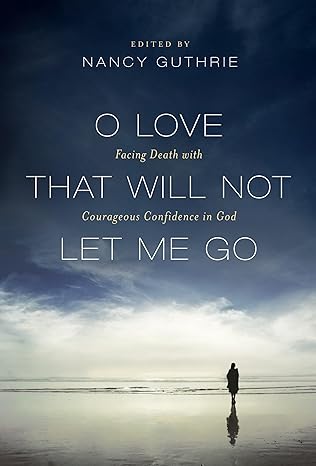A Book Review from Books At a Glance
by Justin Powell
Guthrie compiles a series of short essays from a group of theologians and pastors who span as early as Martin Luther and John Calvin to as contemporary as J.I. Packer or John Piper. Each chapter is fairly short (the longest is 8 pages) which lends to reading the book more as devotional than academic. Indeed, her stated purpose is so “the truths in this book equip and embolden us to live and die well to the glory of God.” As such, students of Christian theology will certainly not find much in terms of new information, but they will certainly be charged with reflecting on the truths of the Gospel and the reality of heaven.
Part One confronts the realities of death for the believer. For Christians, death will always have a bitter sweet place in life. The essays here encourage believers with the hope of salvation, but they also ask us to engage with the reality of bitterness in the face of losing loved ones or our own mortality. Guthrie’s choices of essay writers demonstrates wisdom for those who are suffering in that they avoid the platitudes that plague many writings and funerals. The writers remind readers death is certainly worth mourning, but it is still not the end. Readers are encouraged to face death with expectant hope of salvation. And though the essays do not dismiss the possibility of miraculous healing, they do remind us, as Joseph Bayly’s contribution is titled, “Our Faith is in God, Not in Healing.”
Part Two shifts towards living life in light of its temporal physicality. It opens with Randy Alcorn reminding readers to live each day incorporating healthy habits that will lead to an end without regrets. The discipline for a good death begins with a good life. The next three essays focus on the deathbed itself and how Christians can bear witness to their faith as they approach death. R.C. Sproul gives his testimony of watching his father die well which is supplemented well with Kuyper’s encouragement to face the deathbed with patient endurance and continued worship. Eaves focuses attention on the Christian witness for others facing the same illness. Last, Jeremey Taylor argues against seeing sickness as an evil in itself. Rather, it can be an opportunity for growth moving us in the direction God desires when we would be otherwise unwilling.
Parts Three and Four shift the tone of the book towards hope. Whereas the first two sections confront the reality of death’s bitterness and Christian duty to face it well, the third section reminds the reader of the hope Christians have in light of death. The main thrust is best summarized with the title of Martin Luther’s contribution, “What More Should God Do to Persuade You to Accept Death Willingly?” In the last few essays comprising Part Four, the theme of hope in the face of death continues with an emphasis on heaven.
The greatest strength of such a work is in its brief chapters. Though the reader could finish the entire work in an evening, the small chapters actually beg to be meditated upon like a devotional. Guthrie envisions this book for those facing either their own mortality or the impending death of a loved one. The pastoral tone of each chapter helps the reader to read slowly and deliberately causing reflection on their own circumstance.
In addition, the list of writers is a venerable “who’s who” in the theological world, and yet, their contributions peel back the veneer of theological augustness to reveal the heart of pastors helping their parishioners face the common reality of death. Those who find themselves in the trenches of illness and death do not need treatises or academic prowess. In these essays, they will find helpful reminders and hopeful truth for salvation from their present sufferings.
While readers will find very little to complain about this compilation of pastoral writings, they may find themselves seeking more. Guthrie certainly never suggests editing an exhaustive work, but one does wonder what happened to a chapter on heaven. Richard Sibbes’ “God Reserves the Best for the Last” ends the compilation with a note on “dying daily” which reads much like a summation of what the book entails. It is a helpful chapter, to be sure, but it seems to cut short Guthrie’s structure. The essays have built a trajectory for the reader from the reality of death, the duty of worship and witness even in the face of death, and then to the hope of heaven. And yet, very little is provided in terms of what heaven may be or what eternal life with Christ may entail.
Guthrie expects the book to be read by anyone who wishes to face death well. As such, it is certainly a book for anyone. Very few topics can be said to be truly universal, and death is one such topic. She says the chapters in the book will, “help us to turn away from the pervasive denial about death in our culture, and to face squarely the reality of death through the more beautiful and ultimate reality of Christ” (p.10). While on the surface O Love That Will Not Let Me Go appears to be a devotional for the individual, it also would be beneficial for those who are in counseling, pastoral or otherwise, with those who face serious illness and death. Ironically, the ones who probably would most benefit are those who fall into the cultural denial of death.
Justin Powell
Buy the books

O LOVE THAT WILL NOT LET ME GO: FACING DEATH WITH COURAGEOUS CONFIDENCE IN GOD, edited by Nancy Guthrie